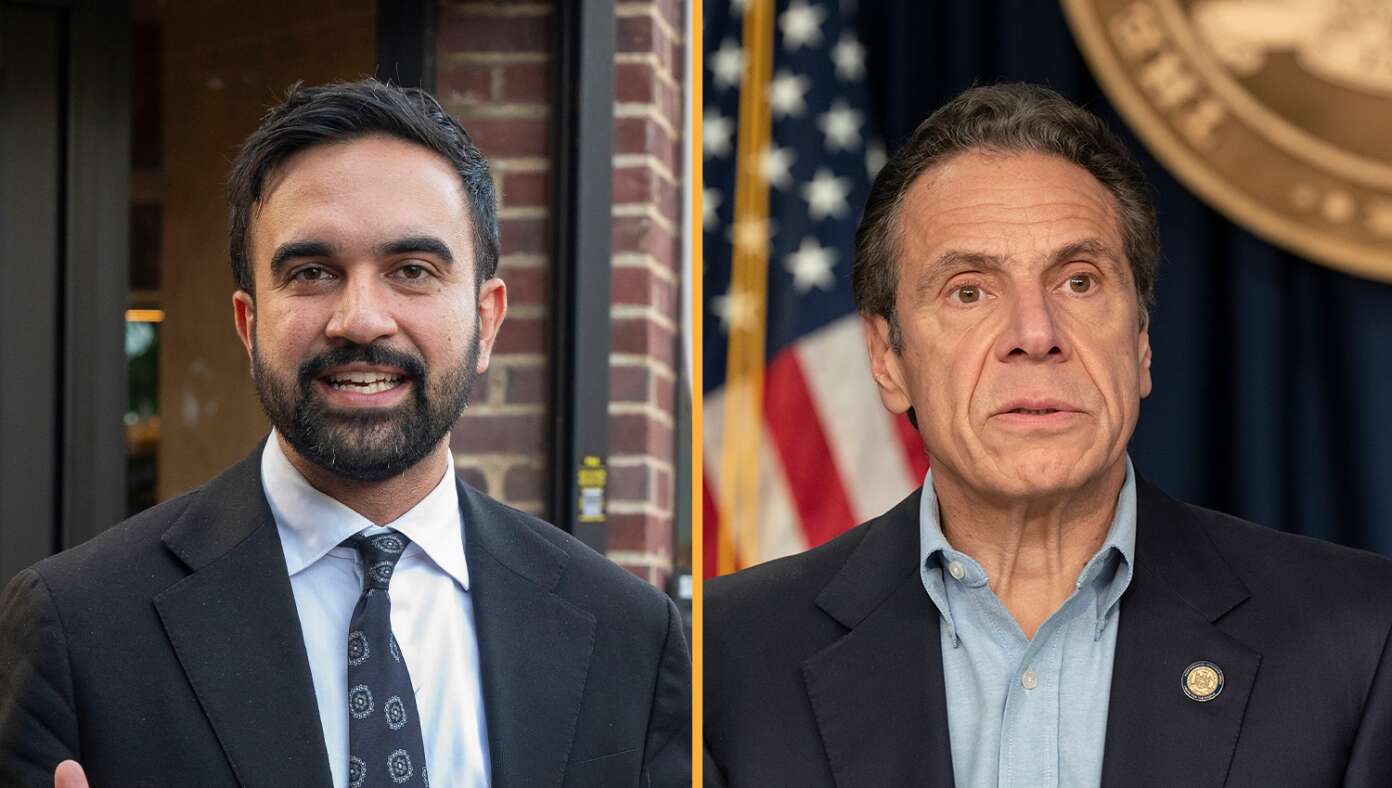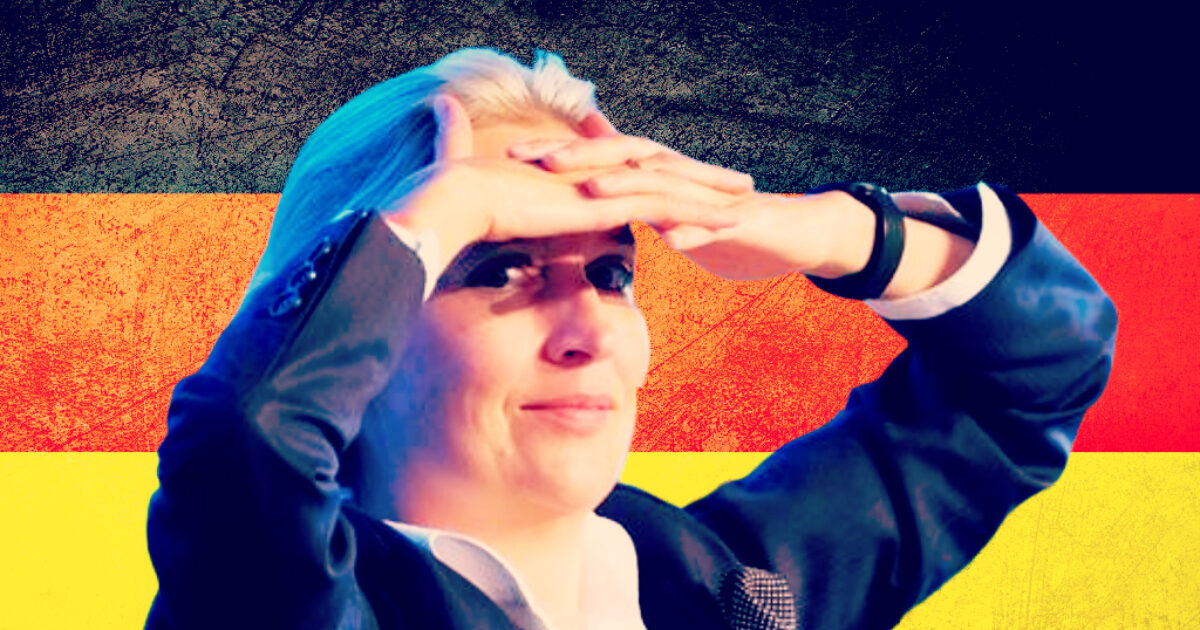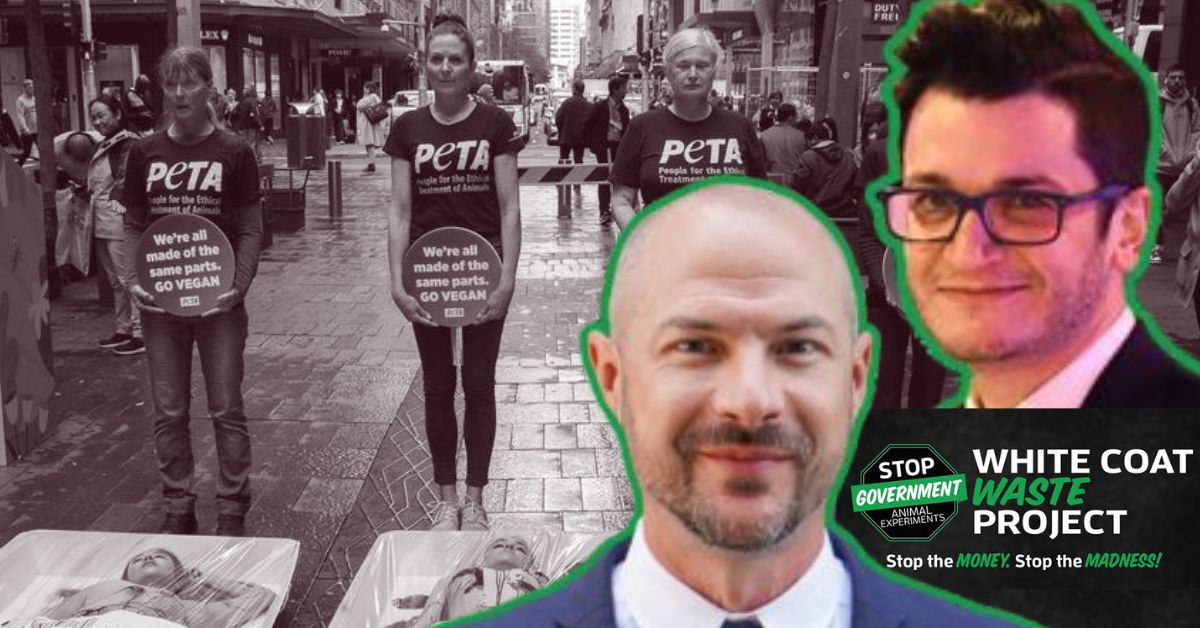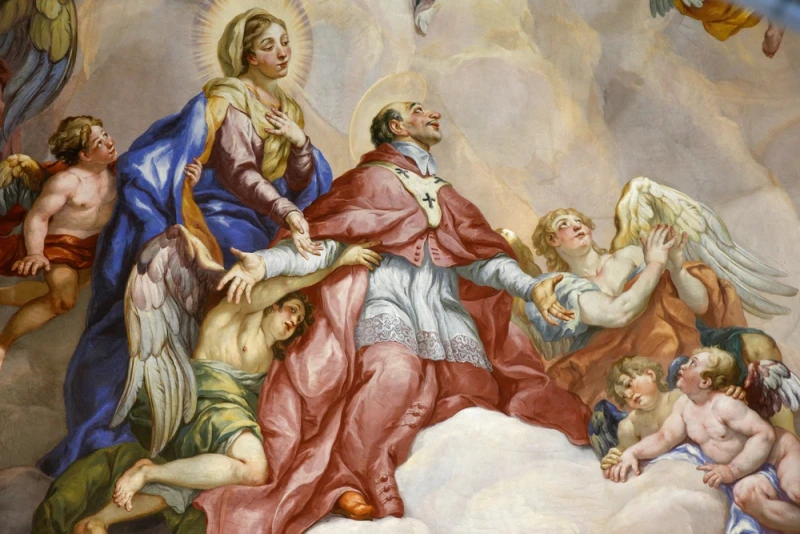
NEW YORK CITY, NY — The elderly Jewish community is reportedly at a crossroads this Election Day, torn between a man who would kill them for being Jewish and a man who would kill them for being elderly.
Read More
NEW YORK CITY, NY — The elderly Jewish community is reportedly at a crossroads this Election Day, torn between a man who would kill them for being Jewish and a man who would kill them for being elderly.
Read More
U.S. — You can rest assured that the decision you made was the correct one, as the doctor who just handed you a bill for $450,000 has also informed you that opting for surgery rather than other potential remedies was in your best interests.
Read More
| Picture of the day |
|---|

|
|
A red squirrel (Sciurus vulgaris) eating a nut in Bednarski Park (Kraków, Poland).
|


Washington, D.C. Newsroom, Nov 4, 2025 / 22:25 pm (CNA).
Mayor-elect Zohran Mamdani, a Democratic socialist who promotes gender ideology and abortion access, won his bid for mayor of New York City on Nov. 4, decisively defeating his two main opponents: former Gov. Andrew Cuomo and talk show host Curtis Sliwa.
Mamdani, a 34-year-old member of the New York State Assembly and the Democratic Party’s nominee for mayor, took 50.4% of the vote on Tuesday. As of 9:42 p.m. ET, 75% of the vote had been tallied.
Cuomo, who served as governor as a Democrat and ran as an independent for mayor, received 41.3% of the vote. Sliwa, the Republican nominee, finished third with 7.5% of the vote.
Mamdani, set to be sworn in on Jan. 1, 2026, will be the city’s first Muslim mayor. He will succeed Democratic Mayor Eric Adams, who suspended his reelection bid in late September.
New York City’s mayoral race gained significant national attention after Mamdani secured an upset victory in the Democratic primary against Cuomo. Mamdani ran an anti-establishment campaign and called himself “the sole candidate running with a vision for the future of this city” during the final debate.
Mamdani embraced gender ideology during his campaign, vowing to provide $65 million in tax funding for hormone therapy drugs and surgeries as a response to President Donald Trump’s executive order to strip federal funding from health care providers that provide such drugs and surgeries to children.
He also intends to create “an office of LGBTQIA+ affairs” and declare New York City a sanctuary for “LGBTQIA+” people. As a member of the Legislature, he also supported a bill to prohibit law enforcement from aiding out-of-state investigations into health care professionals who provide hormone therapy drugs and surgeries to minors.
The mayor-elect’s campaign supported abortion access as well. He has promised to double city tax funding for the New York Abortion Access Fund and the city’s Abortion Access Hub. He has also vowed to “protect New Yorkers from” pro-life pregnancy centers, which he accused of spreading “false or deceptive information.”
Pro-life pregnancy centers have fought numerous lawsuits against states they accuse of censoring their speech in recent years.
Mamdani has also pledged to create a “baby basket” for parents with newborns, which will provide resources, such as diapers, baby wipes, nursing pads, postpartum pads, swaddles, and books. He expects this to cost less than $20 million annually.
The mayor-elect has further vowed to end all city cooperation with Immigration and Customs Enforcement (ICE) and will not use any city resources to help enforce immigration laws. His platform calls for $165 million in funding to support legal defenses for people who are at risk of being deported.
Mamdani has promised to freeze rent for New Yorkers who live in rent-stabilized apartments and eliminate fares for city buses. He plans to establish city-owned grocery stores that he says will provide lower prices and intends to provide no-cost child care for families. He supports raising the minimum wage to $30 by 2030.
To pay for the costs, in part, the mayor-elect has said he will raise the top state corporate tax from 7.5% to 11.5% and add an additional 2% income tax on anyone making more than $1 million annually. He estimates this will generate $9 billion in additional revenue, though critics have questioned those estimations.
Read More

CNA Staff, Nov 4, 2025 / 22:17 pm (CNA).
Off-year elections for state leadership roles in Virginia and New Jersey saw Democrats win key races in what pundits had predicted would be a referendum against Republican President Donald Trump’s second term in the White House.
Former U.S. Rep. Abigail Spanberger, D-Virginia, won the gubernatorial race in that state against current Lt. Gov. Winsome Earle-Sears to become the commonwealth’s first woman governor, according to the Associated Press, while state Sen. Ghazala Hashmi won the race for lieutenant governor there. Democrat Jay Jones also won the state’s attorney general race, beating incumbent Jason Miyares.
In New Jersey, meanwhile, Democrat Mikie Sherrill beat Republican Jack Ciattarelli, with Sherrill keeping the governor’s chair in Democratic control and becoming the second woman to lead the state government.
The results will likely be hailed as a rebuke against Trump’s second term in office, which over the course of 2025 has been marked by aggressive policy on immigration, LGBT issues, and other hot-button political topics.
In Virginia, the race between Spanberger and Earle-Sears was overshadowed in its last month by resurfaced text messages from Jones, dating from 2022, in which he suggested that then-state Speaker of the House Todd Gilbert, a Republican, should be shot in the head. Jones at the time also indicated a wish for Gilbert’s children to die.
The explosive texts, which were published at National Review in October, led Spanberger and Hashmi to condemn Jones, though neither they nor any major Democrats called for Jones to drop out of the race. Jones himself apologized for the remarks.
Earle-Sears repeatedly called for Jones to back out of the contest. At the election’s only gubernatorial debate on Oct. 9, she pressed Spanberger on Jones’ texts, demanding that the Democrat call for Jones’ withdrawal from the race.
Spanberger, meanwhile, made abortion access a central part of her campaign, calling on voters to elect her in order to protect Virginia’s permissive abortion laws. The Democrat has voiced support for a state constitutional amendment protecting abortion, something to which Earle-Sears has publicly voiced her opposition.
The state’s Catholic bishops had warned in October that the results of the state’s elections could lead to that amendment’s being advanced and codified into law, with this year’s winners poised to “decide whether the proposed amendments are advanced or stopped.”
In August, meanwhile, a resurfaced video from 2018 showed Spanberger apparently endorsing the policy of forcing religious hospitals to opt out of performing procedures such as abortion and euthanasia.
“I oppose the ability of religious institutions to put their religious-based ideas on individuals and their health care choices and options,” she said at the time.
Earle-Sears has expressed support for conscience rights, meanwhile, and during the October debate she indicated support for allowing employers to fire employees over their sexuality. “That’s not discrimination,” she said.
In New Jersey, the Republican and Democratic candidates for governor offered a notable agreement on abortion, with both Sherrill and Ciattarelli stating their desire to keep the procedure legal.
The two differed on specific policy: Ciattarelli had advocated restricting abortion after 20 weeks, while Sherrill said she favored the state’s current laws, which allow for abortion up until birth.
But their broader agreement on the legality of abortion underscored the state’s high levels of pro-abortion support among voters and indicated that the issue remains a lightning rod for Republicans even more than three years after the Supreme Court repealed Roe v. Wade.
Elsewhere, the candidates differed on LGBT issues. Ciattarelli had called for men who believe they are women to be barred from women’s sports, while Sherrill voted against federal legislation that would have barred men from competing in girls’ sporting leagues.
The Republican had also advocated rolling back pro-LGBT curriculums in public schools. Sherrill, in contrast, had voted against a federal bill that would have required schools to inform parents if their children began identifying as the opposite sex at school.
Ciattarelli had also called for a state school voucher program modeled after Florida’s successful voucher initiative. Such a measure would “allow parents real choices in the schools their children attend,” he said ahead of the election.
In October, the state’s bishops affirmed the Church’s teaching on the electoral process by telling the faithful that it is “not the Church’s place to tell them how to vote.”
“Each of us has the right — and the responsibility — to follow our conscience, shaped by Scripture and the Church’s wisdom,” the bishops said.
Read More

Washington, D.C. Newsroom, Nov 4, 2025 / 22:10 pm (CNA).
Pennsylvania voters elected to retain three Democratic justices on the Pennsylvania Supreme Court following a campaign with outside groups casting the vote as a referendum on abortion access, election integrity, and the future balance of the court.
The outcome means Democrats will maintain their 5-2 majority on the court.
With more than 54% of the vote tallied, 62.3% voted to retain Christine Donohue, 62.5% voted to retain Kevin Dougherty, and 62.4% voted to retain David Wecht. None of the other justices were on the ballot for 2025.
The Democratic Legislative Campaign Committee celebrated the victory on X.
“Thanks to tonight’s victories, the court’s Democratic majority will continue to protect fair maps, voting rights, and reproductive freedom for Pennsylvanians for years to come,” the post read.
In Pennsylvania, state Supreme Court justices are chosen through partisan elections to 10-year terms. When a judge’s term expires, voters choose whether to retain them for another 10 years with a “yes” or “no” vote. Only one justice has ever lost a retention vote: Russell Nigro in 2005.
While the 2025 Wisconsin Supreme Court race had over $100 million in total donations and spending, setting a new national record for a state judicial election, the Pennsylvania race totaled a fraction of that, according to the Pennsylvania Department of State. An estimated $15 million poured into the race. Donors included Planned Parenthood and labor unions, among others, plus Jeff Yass, a businessman who is a billionaire and the commonwealth’s richest man.
The 2025 campaign for Democratic justices focused heavily on abortion access.
One campaign advertisement in favor of retaining the three justices detailed the pro-life laws in several other states after the U.S. Supreme Court overturned Roe v. Wade. It called the Democratic justices on the Pennsylvania Supreme Court “our last line of defense” against restrictions on abortion.
Last year, the Pennsylvania Supreme Court revived a 2019 lawsuit filed against the state’s Abortion Control Act. The existing law, which the state Supreme Court upheld in 1985, prohibits the use of state funds for abortion except in cases of rape, incest, or when the mother’s life is at risk.
In the decision, the majority ruled that banning public funds for most abortions “discriminates against those women who choose to exercise their fundamental right to terminate a pregnancy” and asserted the state constitution’s guarantee of equal protection “includes a right to decide whether to have an abortion or to carry a pregnancy to term.”
The Pennsylvania Supreme Court sent the case back down to the appellate court, which could set the stage for a major abortion ruling in the state that could open the door to taxpayer-funded elective abortions.
In Pennsylvania, elective abortion is legal through the 23rd week of pregnancy.
Reproductive Freedom For All also celebrated the wins on X. The organization wrote Donohue’s win would protect abortion access “and will help to fight anti-abortion restrictions.” It called Wecht’s win “a key success for abortion rights in the state.” The account wrote Dougherty would “continue to protect abortion access in the Keystone State.”
All three justices were endorsed by Planned Parenthood PA PAC and Reproductive Freedom for All.
Other issues that came up during the campaign included redistricting fights and mail-in voting.
Donohue reaches the mandatory retirement age of 75 in 2027. Both Dougherty and Wecht are 63 years old, which means they will not face another retention vote until 2035.
Read MoreGlorious Prince of the heavenly hosts
and victor over rebellious spirits,
be mindful of me who am so weak and sinful
and yet so prone to pride and ambition.
Lend me, I pray,
thy powerful aid in every temptation and difficulty,
and above all do not forsake me
in my last struggle with the powers of evil.
Amen.
Read MoreA reading from the Letter of St. Paul to the Romans
13:8-10
Brothers and sisters:
Owe nothing to anyone, except to love one another;
for the one who loves another has fulfilled the law.
The commandments, You shall not commit adultery;
you shall not kill;
you shall not steal;
you shall not covet,
and whatever other commandment there may be,
are summed up in this saying, namely,
You shall love your neighbor as yourself.
Love does no evil to the neighbor;
hence, love is the fulfillment of the law.
From the Gospel according to Luke
14:25-33
Great crowds were traveling with Jesus,
and he turned and addressed them,
"If anyone comes to me without hating his father and mother,
wife and children, brothers and sisters,
and even his own life,
he cannot be my disciple.
Whoever does not carry his own cross and come after me
cannot be my disciple.
Which of you wishing to construct a tower
does not first sit down and calculate the cost
to see if there is enough for its completion?
Otherwise, after laying the foundation
and finding himself unable to finish the work
the onlookers should laugh at him and say,
‘This one began to build but did not have the resources to finish.’
Or what king marching into battle would not first sit down
and decide whether with ten thousand troops
he can successfully oppose another king
advancing upon him with twenty thousand troops?
But if not, while he is still far away,
he will send a delegation to ask for peace terms.
In the same way,
everyone of you who does not renounce all his possessions
cannot be my disciple."
In today’s Gospel Jesus insists on the conditions for being his disciples: preferring nothing to the love of Christ, carrying one’s cross and following him. Many people in fact drew near to Jesus, they wanted to be included among his followers; and this would happen especially after some miraculous sign which accredited him as the Messiah, the King of Israel. However Jesus did not want to disappoint anyone. He knew well what awaited him in Jerusalem and which path the Father was asking him to take: it was the Way of the Cross, the way of sacrificing himself for the forgiveness of our sins. Following Jesus does not mean taking part in a triumphal procession! It means sharing his merciful love, entering his great work of mercy for each and every man and for all men. The work of Jesus is, precisely, a work of mercy, a work of forgiveness and of love! Jesus is so full of mercy! And this universal pardon, this mercy, passes through the Cross. Jesus, however, does not want to do this work alone: he wants to involve us too in the mission that the Father entrusted to him. (…) Jesus’ disciple renounces all his possessions because in Jesus he has found the greatest Good in which every other good receives its full value and meaning: family ties, other relationships, work, cultural and economic goods and so forth…. The Christian detaches him or herself from all things and rediscovers all things in the logic of the Gospel, the logic of love and of service. (Pope Francis, Angelus, 8 September 2013)
Read More

Washington, D.C. Newsroom, Nov 4, 2025 / 17:47 pm (CNA).
U.S. bishops and other Catholic leaders are offering “prayers of support and solidarity” for world leaders who will discuss climate change and other environmental matters at an upcoming conference.
The 30th annual United Nations Climate Change Conference (COP30) is scheduled for Nov. 10–21 in Belém, Brazil. World leaders, scientists, and representatives from civil society will discuss ways to implement solutions to combat climate change and form new national action plans.
Archbishop Borys Gudziak, chair of the United States Conference of Catholic Bishops’ (USCCB) Committee on Domestic Justice and Human Development; Bishop A. Elias Zaidan, chair of the Committee on International Justice and Peace; and Sean Callahan, CEO of Catholic Relief Services (CRS), are calling for “urgent, courageous action to protect God’s creation and people.”
“This year’s COP30 convenes while the Catholic Church celebrates the Jubilee Year of Hope,” the leaders said in a Nov. 4 statement. It is “a sacred opportunity to restore relationships and renew creation at a time when the gift of life is under grave threat.”
“Pope Leo XIV called for the participants of COP30 to ‘listen to the cry of the Earth and the cry of the poor, families, Indigenous peoples, involuntary migrants and believers throughout the world,’” the leaders said.
“Climate change, biodiversity loss, and environmental degradation are devastating communities already burdened by poverty and exclusion. Farming and fishing families confront threats to their livelihoods; Indigenous peoples face destruction of their ancestral lands; children’s health, safety, and futures are at risk,” the statement said.
“A decade ago, in Laudato Si’, Pope Francis reminded us that the climate is a common good, belonging to all and meant for all, and that intergenerational solidarity is not optional,” the statement said. “Failing to steward God’s creation ignores our responsibility as one human family.”
The leaders are calling on world leaders to act “urgently” to implement the Paris Agreement, a 2015 international treaty to limit global warming that “protects God’s creation and people.”
The leaders asked that countries and civil society organizations recommit to implementation that fosters economic opportunities, commits to efforts that reduce climate warming emissions, and pledges loss and damage financing that guarantees priority and direct access to vulnerable communities.
They also asked that they ensure a just transition to a sustainable economy centered on workers, communities, and creation and make financing for climate solutions timely and transparent while also upholding human dignity.
“As all of us are impacted, so must we all be responsible for addressing this global challenge,” the leaders said. “Together, these actions can work towards integral ecology and ‘give priority to the poor and marginalized in the process.’”
Read More


Merz on immigration reform: too little, too late.
The post German Chancellor Merz, Under Pressure from a Surging Rightwing AfD, Scrambles to React to Mass Migration, Wants to ‘Repatriate’ Syrian ‘Asylum Seekers’ appeared first on The Gateway Pundit.
Read More


In a revealing profile published in its most recent issue, The New Yorker delves into the chaotic escape of 43 rhesus macaques from the Alpha Genesis primate facility in Yemassee, South Carolina, in 2024.
The post PETA Goes on Jealous Rant Against White Coat Waste, Slams Successful Anti-Animal Testing Crusaders for Having ‘Young-Male-Testosterone Energy’ While Trying to Steal Credit for Their Wins appeared first on The Gateway Pundit.
Read More


Ghoul “comedian” Jimmy Kimmel was temporarily yanked off the air after his disgusting remarks following the political assassination of conservative icon Charlie Kirk.
The post Erika Kirk Shares Her Message to Jimmy Kimmel in Fox News Interview (Video) appeared first on The Gateway Pundit.
Read More

CNA Staff, Nov 4, 2025 / 06:30 am (CNA).
Catholic schools are faring much better in dioceses in which state-funded voucher programs are available for parents to use to pay school tuition, one researcher has found, though enrollment is still declining in most places.
John F. Quinn, a historian at Salve Regina University in Rhode Island, examined six Catholic dioceses over the last 16 years — three in states with voucher programs and three in states without them — and found that parochial schools are benefiting from vouchers.
He presented his research at the Society of Catholic Social Scientists’ annual conference at Franciscan University of Steubenville, Ohio, in October.
Quinn found that since 2009, the dioceses of Providence, Rhode Island; Fall River, Massachusetts; and Rockford, Illinois — none of which are located in states with voucher programs — have seen school closures and drops, some very large, in their parochial school enrollment.
Providence schools have seen a two-thirds drop, from 16,000 students in 2009 to about 10,000 in 2025, according to the historian.
The Diocese of Fall River, meanwhile, saw a 36% drop in enrollment, going from 7,800 students in 2009 to 5,000 in 2025. Rockford’s diocese saw a precipitous 52% drop, with 15,500 students in 2009 and 7,400 today. All three dioceses also saw multiple parochial school closures.
The numbers are very different in the dioceses in states that have voucher programs.
According to Quinn, the Archdiocese of Indianapolis only saw its enrollment numbers drop 3% since 2009. Nearly 23,000 were enrolled in its parochial schools in 2009, and the number stands at 22,300 today. The overall population of the archdiocese has also dropped 5% over the same time period, he noted.
Indiana’s Choice Scholarship Program was launched in 2011 and expanded to nearly all residents in 2025.
Two other dioceses, Orlando and Venice, are both in Florida, a state that approved its voucher program in 1999 and expanded it significantly in 2023.
The Diocese of Orlando has seen a 13% drop, going from 14,500 students in 2009 to 12,750 in 2025.
The Diocese of Venice, a relatively new one established in 1984, has seen a 52% increase in parish school enrollment since 2009 and growth in its number of parochial schools. In 2009, 4,400 students attended three high schools and 10 elementary schools, and today there are four high schools and 12 elementary schools with an enrollment of 6,800.
Quinn acknowledged that Florida has a growing population but said even taking that into account, the voucher programs have indisputably aided the Catholic schools there.
“We are full up with nearly every school at capacity,” Father John Belmonte, SJ, Diocese of Venice Superintendent of Catholic Education, said in September.
“America’s Catholic leaders have long seen parochial schools as critical to the well-being of the Church in America,” Quinn noted.
He recalled the Third Plenary Council of Baltimore in 1884, at which the bishops “called for every parish to have a school and for all Catholic parents to send their children” to them.
Quinn noted that pastors would sometimes build a parish school first before completing the church building.
In 1965, the high point of parochial school enrollment, 52% of American Catholic children, or 5.2 million students, were enrolled at 13,000 Catholic grammar and high schools.
Quinn cited the National Catholic Educational Association’s annual report, released in the spring, that showed just under 1.7 million students are currently enrolled in the nation’s current 8,500 parochial schools.
In 1965, nearly 70% of all parochial school teachers, or 115,607, were religious sisters, priests, or brothers, according to the Cardinal Newman Society.
By 1990, only 2.5% of parochial school faculty were priests or religious, and that number remains the same today.
Quinn said costs started rising as more lay teachers replaced religious and priests in the classroom.
Read More

CNA Staff, Nov 4, 2025 / 04:00 am (CNA).
St. Charles Borromeo, whose feast day the Catholic Church celebrates Nov. 4, was a cardinal and a prominent teacher of the Catholic faith. He generously donated much of his considerable wealth to charity and sacrificed his own health to help plague victims at a time when many other authorities fled.
And, despite what you might have heard, he probably wasn’t obese.
Why does that matter? Well, because Charles is popularly invoked as a patron saint of stomach ailments and also of obesity and dieting. These patronages — and whether or not he was himself obese — are not mentioned in hagiographies of St. Charles, so it’s unclear how this particular association began. Charles was known for helping the poor in times of famine and for practicing self-mortification, and he was certainly not known to indulge in food to excess.
Whether or not his invocation by dieters is appropriate, what is clear is that St. Charles Borromeo had a massive influence on the Church.
Charles was born in 1538 near Milan. He was born wealthy — in fact, he was part of the famously rich and influential Medici family — but sought to use his wealth to benefit the Church rather than himself.
Owing in part to his well-connected family, Charles soon assumed staggering responsibilities, serving as a papal diplomat and supervisor of major religious orders.
Charles was a central figure in the Council of Trent (1545–1563), which among other things served as the Church’s official answer to the Protestant Reformation. Its twofold mission was to clarify Catholic doctrine against Protestant objections and reform the Church internally against many long-standing problems. As a papal representative, Charles participated in the council’s conclusion in 1563, when he was only 25, and was ordained a priest during the council. He also played a leading role in assembling its comprehensive summary, the Catechism of the Council of Trent.
Charles’ uncle, Pope Pius IV, appointed him archbishop of Milan in 1563, and soon after he became a cardinal. He found his diocese in a state of disintegration, after two generations of virtually no local administration or leadership. Charles got straight to work establishing schools, seminaries, and centers for religious life. He constantly directed the work of restoration of ecclesiastical discipline and the education of the young, even down to minute details. He tried as much as possible to live a simple life and give to the poor whenever possible, and he practiced self-mortification.
The clergy during this time were in many cases lax and careless, living scandalous lives, such that the people had grown to be equally negligent and sinful. While bishop of Milan, St. Charles oversaw many dramatic and effective reforms of the clergy, the liturgy, and of religious education. He encountered much opposition to those reforms, so much so that a group of disgruntled monks attempted to kill him, but he was miraculously unharmed when an assassin fired a gun straight at him while kneeling in prayer at an altar.
He was very active in preaching and ministry and was famous for bringing back many lapsed Catholics to the Church. As a result, today he is honored as the patron saint of catechists and catechumens, people who teach and learn the faith. In fact, he was the founder of the Confraternity of Christian Doctrine, which systematically instructed children in the faith — the forerunner of the modern “Sunday school.”
In 1571, the region where Charles was working suffered a severe famine, during which he worked tirelessly to help the starving, supporting at his own expense as many as 3,000 people daily for three months. At the same time, Charles himself suffered various ailments, including a low fever.
A few years later, a plague struck Milan. Charles was convinced that the plague was sent as a chastisement for sin and sought to give himself all the more to prayer and to service to his people. He paid personal visits to plague-stricken houses to comfort those suffering, and as a spiritual penance, he walked in procession, barefoot, with a rope around his neck and a relic in his hand.
At the end of 1584 Charles suffered a skin infection in one of his legs but still continued to travel to take care of his diocese. He died young at the age of 46 on Nov. 3, 1584, and was canonized 26 years later, in 1610.
This story was first published on Nov. 4, 2022, and has been updated.
Read MoreLooking for a sky event this week? Check out our full Sky This Week column. November 3: Venus and Spica, side by side Tonight Jupiter sports a three-for-one as Io transits with its shadow in tow and Europa’s shadow sneaks onto the disk in preparation for its own moon to transit. Jupiter rises around 9:30 P.M. localContinue reading “The Sky Today on Tuesday, November 4: Two shadows and a moon cross Jupiter”
The post The Sky Today on Tuesday, November 4: Two shadows and a moon cross Jupiter appeared first on Astronomy Magazine.
Read More
The Southern Taurid meteor shower peaks Nov. 4, with a “swarm year” doubling fireball activity—but there’s a catch.
Read More